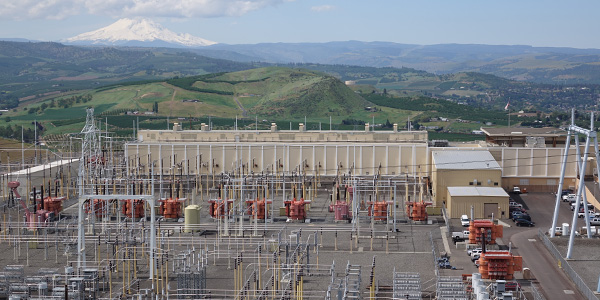By Hudson Sangree
A proposed merger of two Pacific Northwest transmission planning groups fell short of the requirements of FERC Order 1000, a landmark measure meant to introduce more competition into transmission development while achieving efficiencies and cost savings, the commission ruled Dec. 27 (ER19-2760).
Seven member utilities of ColumbiaGrid and Northern Tier Transmission Group — including PacifiCorp, Avista and Portland General Electric — filed proposed tariff revisions with FERC in September seeking to combine the two entities to form a regional planning organization (RPO) called NorthernGrid. They said the merger would reduce member expenses and allow for collaborative planning.
The effort had the backing of state regulators, several U.S. senators and the Bonneville Power Administration, among others.
FERC, however, sided with independent transmission developer LS Power, which argued that the utilities’ proposed revisions were flawed under the requirements of Order 1000. (See Tx Developer Calls for Closer Look at NorthernGrid.) The company said it didn’t oppose the merger but contended the filings had failed to demonstrate the new RPO would meet transmission needs more effectively than the status quo.
The commission agreed. It stressed that it was rejecting the proposal without prejudice, inviting the parties to refile after correcting the deficiencies.
“We find that the proposed NorthernGrid regional transmission planning process does not satisfy Order No. 1000’s requirement to evaluate alternative transmission solutions that might meet the needs of the transmission planning region more efficiently or cost-effectively than solutions identified by individual public utility transmission providers in their local transmission planning processes,” FERC wrote.
“Specifically, the proposed NorthernGrid regional transmission planning process does not provide transmission developers, including nonincumbent transmission developers, with a reasonable opportunity to submit project proposals after local and regional needs are identified and made available to stakeholders through the regional transmission planning process,” the commission said.
In addition, the proposal required “the contemporaneous submission of both needs and proposed transmission projects,” FERC noted. As LS Power pointed out, Order 1000 requires the identification of regional needs followed by specific project proposals, the commission said.
“The proposed [tariff revisions] would require developers to submit proposed transmission projects to address regional transmission needs prior to the identification of those needs by the regional transmission planning process,” FERC wrote. “We find that this structure deprives developers and stakeholders of a sufficient opportunity to propose solutions in response to needs identified through the regional transmission planning process.”
FERC also criticized the utilities’ proposal for failing to meet the openness and coordination components of Order 890’s local transmission planning principles, now incorporated regionally in Order 1000.
“The coordination principle requires public utility transmission providers to provide customers and other stakeholders with the opportunity to participate fully in the transmission planning process, which must provide for timely and meaningful input and participation of customers and other stakeholders regarding the development of transmission plans (including at the early stages of development),” FERC said. “The openness principle requires that transmission planning meetings be open to all affected parties including, but not limited to, all transmission and interconnection customers, state authorities and other stakeholders.”
The filing parties’ proposed revisions didn’t satisfy the coordination and openness principles because they “exclude broad stakeholder participation in the initial review of the development of the draft study scope, draft regional transmission plan and draft final regional transmission plan,” FERC said.
The commission identified additional flaws in the utilities’ proposed cost allocation methodology and said they failed to meet the posting requirements for transmission needs driven by public policy requirements of state, local and federal governments.
Order 1000 has had a rocky path to implementation since FERC adopted it in 2011. (See PSEG, GridLiance Spar over Order 1000.) The commission said it welcomed the creation of the RPO, which it said could help the region meet the order’s goals of regionalization and competition.
“We recognize that, by combining the existing ColumbiaGrid and [Northern Tier] transmission planning regions, the establishment of NorthernGrid would be a significant step forward for regional transmission planning in the Northwest,” FERC wrote. “The commission has long recognized that transmission planning over a broader footprint has the potential to yield benefits for customers, and we appreciate the efforts by the region’s stakeholders to establish NorthernGrid as a new transmission planning region.
“If filing parties refile their proposal,” FERC wrote, “the revised process should provide a meaningful opportunity for transmission developers to submit project proposals after regional transmission needs have been identified through the regional transmission planning process, and for that process to evaluate those proposed projects for possible selection in the regional transmission plan for purposes of cost allocation.”




